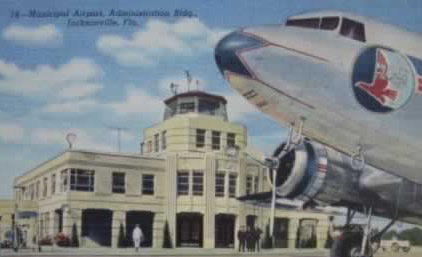Douglas DC-3
The DC-3 is a two-engine, propeller-driven airliner developed by the Douglas Aircraft Company. It has become one of the most well known, and successful, airplanes in aviation history.
The Douglas DC-1
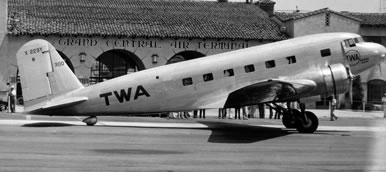 The Douglas DC-1 |
The Douglas DC-1 was the first model of the famous DC commercial transport aircraft series.
The "DC" designation stands for "Douglas Commercial".
The DC-1 had a flat-sided fuselage, a tapered wing, retractable landing gear, and twin 690hp Wright radial engines driving variable-pitch propellers. It accomodated 12 passengers.
Only one DC-1 was produced, making its maiden flight in July of 1933. But it became the basis for the design of the DC-2 and DC-3.
The Douglas DC-2
The new DC-2 was similar in shape to the DC-1 but had more powerful engines, was faster and had a longer range. Its additional 2 feet in length allowed another row of seats, increasing passenger capacity from 12 to 14. It first flew in May of 1934.
Stretching the length of the plane changed its center of gravity, so the wing had to be moved, creating a new transport. The Douglas engineers reviewed the changes and decided to name the new aircraft the Douglas Commercial 2, or DC-2.
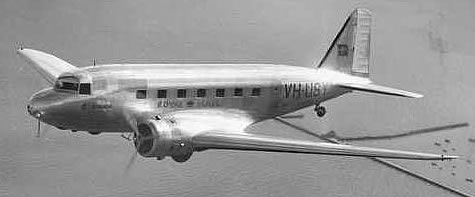 A Douglas DC-2 in flight |
The size of the DC-2 allowed crew and passengers to stand erect when walking through the cabin. Passengers boarded and exited on ramps pushed up to rear area of the fuselage.
In addition to its success with commercial airlines, several miliitary variants of the DC-2 were built, including the C-32, C-33, C-39, C-41 and Navy R2D1.
DC-3 Development
Design work began in 1934 on what would become the DC-3, at the insistence of C.R. Smith, president of American Airlines. Smith wanted two new planes - a longer DC-2 that would carry more day passengers, and another with railroad-type sleeping berths, to carry overnight passengers.
Up until the development of the DC-3, airplanes did not have enough passenger capacity to allow the airlines to be profitable by carrying passengers alone. It was necessary to have government air mail contracts to make up the shortfall. The collaboration between American Airlines and the Douglas Aircraft Company proved invaluable in the design of the famous Douglas DC-3.
 United Airlines DC-3 "Mainliner" |
The first DC-3 built was the Douglas Sleeper Transport (DST), a 14-bed sleeper, also known as Skysleepers by airlines. The plane could accommodate 14 overnight passengers.
The DC-3 day plane, which became the most popular of the DC-3s, was configured in a 21 seat configuration. Included was a galley set up for full food service, including hot meals served on china plates and silverware shaped like the profile of an airplane.
The DC-3 was fast, offered extended range over competing models, was more reliable, and carried passengers in greater comfort. In the pre-WWII years, the DC-3 pioneered many air travel routes. It was able to cross the continental U.S. from New York to Los Angeles in 18 hours and with only 3 stops.
The first DC-3 "Flagship" was delivered to American Airlines in June of 1936, followed two months later by the first standard 21-passenger DC-3. In November of 1936, United Airlines became the second DC-3 customer, launching its "Mainliner" series. Eastern Airlines was another early customer, with its "Great Silver Fleet".
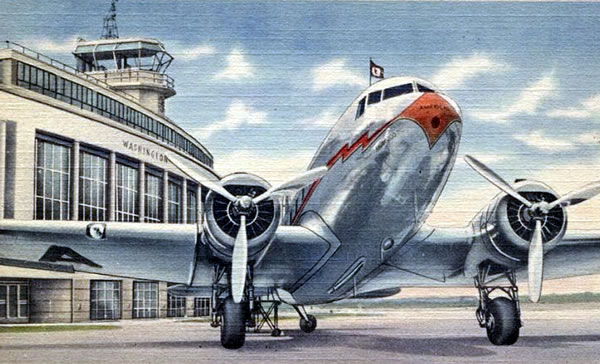 |
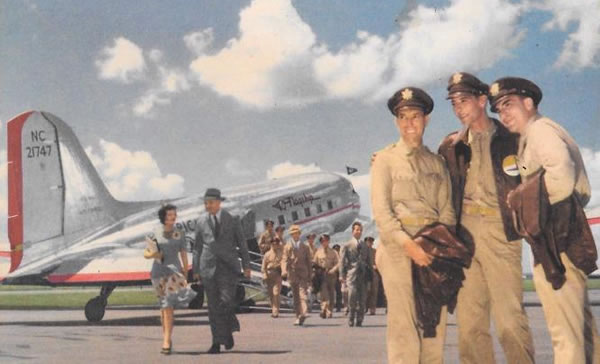 |
DC-3 Variants
By 1941 the old Air Corps had been transformed into the Army Air Forces, and it selected a modified version of the DC-3, the C-47 Skytrain, to become its standard transport aircraft.
As a supply plane, the C-47 could carry up to 6,000 pounds of cargo. It could also hold a fully assembled jeep or a 37 mm cannon. As a troop transport, it carried 28 soldiers in full combat gear. As a medical airlift plane, it could accommodate 14 stretcher patients and three nurses.
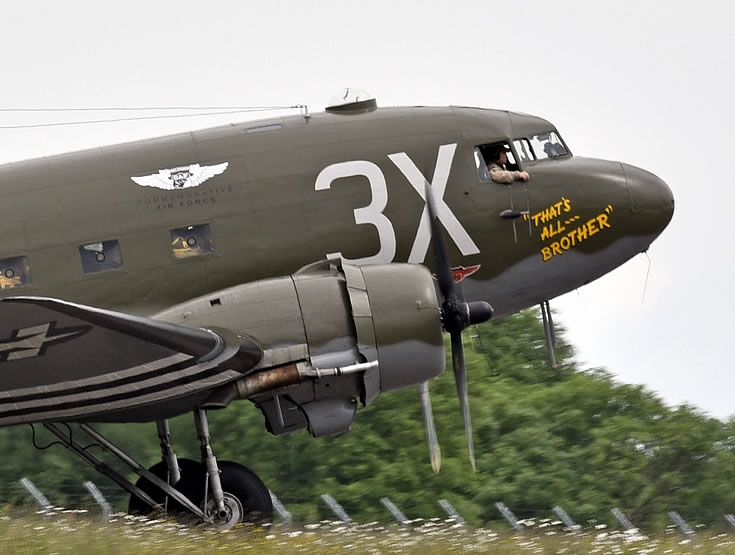 C-47 Skytrain "That's All Brother" |
Seven basic versions were built, and the aircraft was given at least 22 designations, including the AC-47D gunship, the EC-47 electronic reconnaissance aircraft, the EC-47Q antiaircraft systems evaluation aircraft and the C-53 Skytrooper troop transport version. The C-53 lacked the reinforced cargo floor, large cargo door, and hoist attachment of the basic C-47.
The Navy version was known as the R4D.
It was also used extensively by friendly allies in World War II. The aircraft in allied forces was known as the Dakota, used by the Royal Air Force, the Royal Australian Air Force, the Royal Canadian Air Force, the Royal New Zealand Air Force, and the South African Air Force.
The Lisunov Li-2, originally designated PS-84, was a license-built Soviet version of the Douglas DC-3. A total of over 4,900 aircraft were produced of all Li-2 variants between 1940 and 1954. Several airlines, including Aeroflot, flew the variant.
During World War II, the armed forces of many countries used the C-47 and modified DC-3s for the transport of troops, cargo, and wounded.
Possibly its most influential role in military aviation, however, was flying "The Hump" from India into China. The expertise gained flying "The Hump" would later be used in the 1948 Berlin Airlift, in which the C-47 would play a major role.
The C-47 also earned the informal nickname Gooney Bird in the European theater of operations.
After WWII, Douglas offered a new model to airlines: the DC-3S or "Super DC-3", which was was 39 in longer than the original DC-3. It carried up to 30 passengers, and featured increased speed to compete with newer airliners.
One hundred C-47J aircraft were re-engineered by Douglas and incorporated new wings; a new, taller vertical tail; modified landing gear; and more powerful engines. They entered U.S. Navy service under the designation C-117D.
Total production of the DC-3 and all of its military variants totaled 16,079 aircraft.
Douglas DC-3 and C-47 Side-by-Side Comparison
The military C-47 differed from the commercial aviation DC-3 in numerous modifications that included being fitted with a cargo door, a strengthened floor, a shortened tail cone for glider-towing shackles, and an astrodome in the cabin roof (see comparison below).
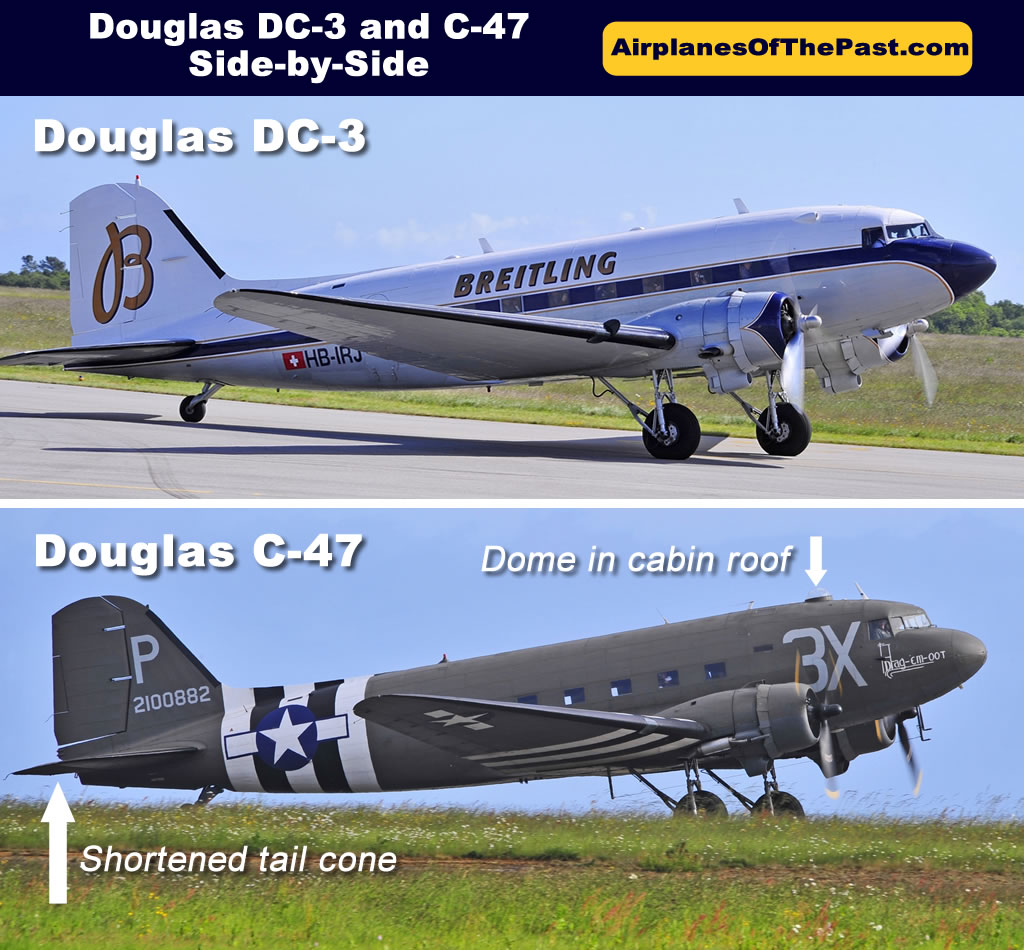
|
Surviving DC-3 Aircraft
Today, many DC-3 remain in operation as private aircraft. Many other surviving C-47 aircraft have been restored and are on static display around the world.
Others have been maintained in air worthy condition, and can be seen on air tours and air shows. The oldest surviving DC-3 is N133D, the sixth Douglas Sleeper Transport built in 1936.
Due its reliability and ruggedness, many claim that "the only replacement for a DC-3 is another DC-3".
Photos of the DC-3 and Its Variants
DC-3-227B "Breitling", Registration HB-IRJ, in Cherbourg, France, June 2014. It was delivered to American Airlines in March of 1940 and christened the “Flagship Cleveland”. It was leased to the U.S. Army between 1942 and 1944. After the war, it served with Trans Texas Airways and other carriers. (Photo by DELEHELLE Eric) |
 |
Built as Douglas DC-3A-453, C/N 6346, "Air Veteran", Registration OH-LCH, is operated by the DC Association in Helsinki, Finland. Seen here in Cherbourg, France, June 2014, in the markings of Finnish Airlines. The aircraft was built for Pan American Grace Airways as NC34953, but was transferred to military service in 1942 as a C-53C-DO, S/N 43-2033. (Photo by DELEHELLE Eric) |
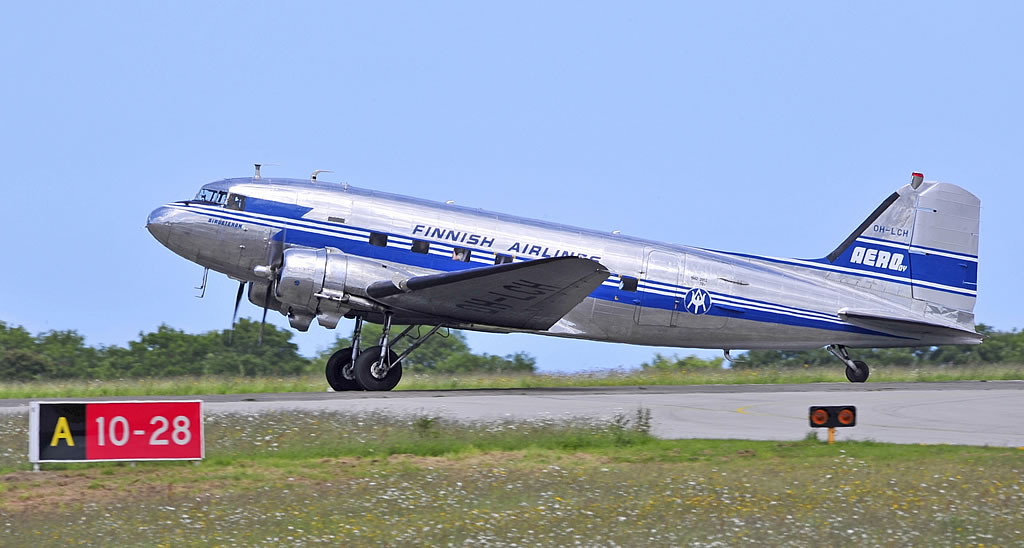 |
DC-3A-453, "Air Veteran", Registration OH-LCH. Seen here in Cherbourg, France, June 2014 (Photo by DELEHELLE Eric) |
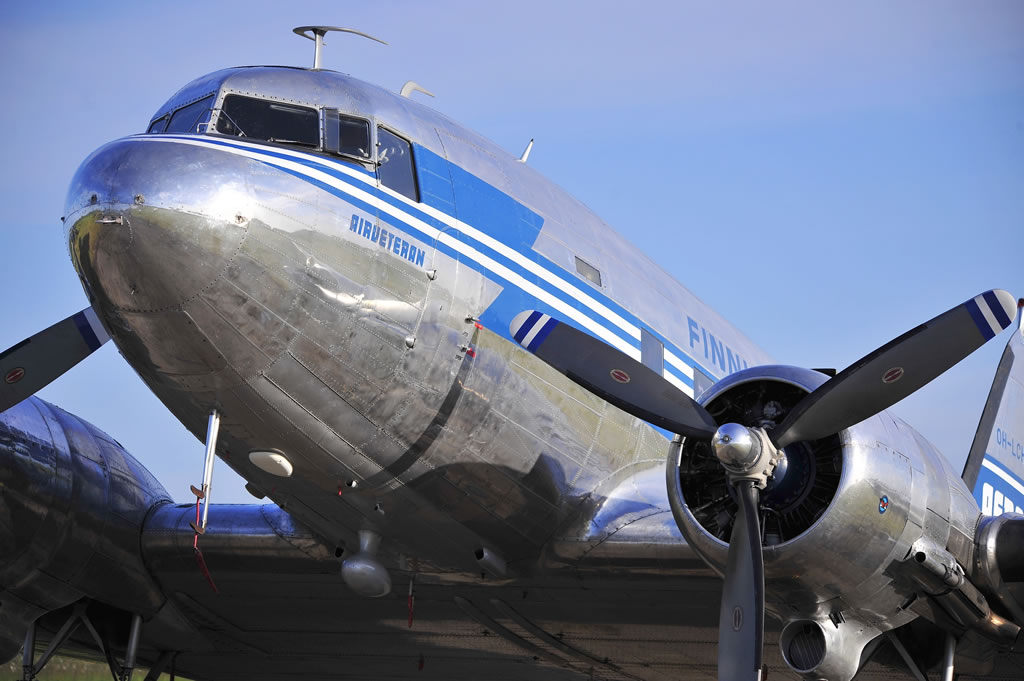 |
DC-3 "Froissair", Registration N431HM (Photo by DELEHELLE Eric) |
 |
Douglas C-47 Skytrain S/N 41-7723 at the Pima Air and Space Museum in Tucson, Arizona |
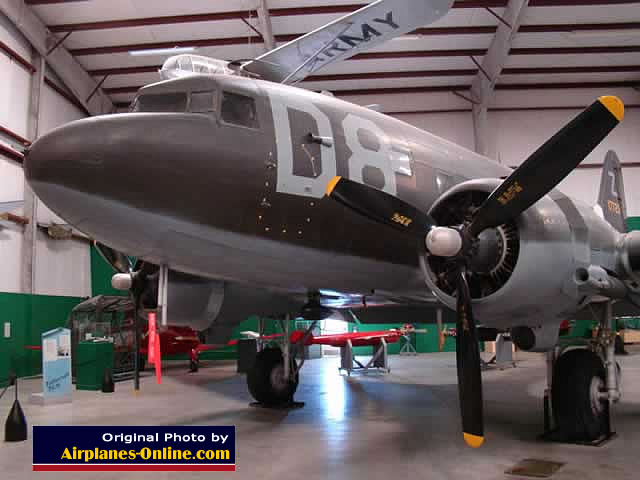 |
Douglas R4D-8 (C-117D) Super Gooneybird of the U.S. Marines S/N 50826 at the Pima Air & Space Museum. It is painted in the markings of the Marine Headquarters and Maintenance Squadron 27 (H&MS-27,) Cherry Point, North Carolina, 1968 |
 |
Noseart on C-47A Skytrain, S/N 43-48098, "War Weary", Strategic Air Command and Aerospace Museum |
 |
C-47A Skytrain "Hi Honey" S/N 43-16130 at the Barksdale AFB airpark |
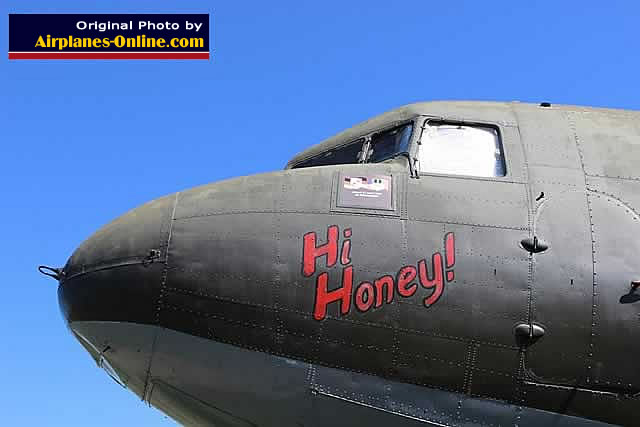 |
Nose view of C-47 Skytrain, N226GB, South Dakota Air and Space Museum |
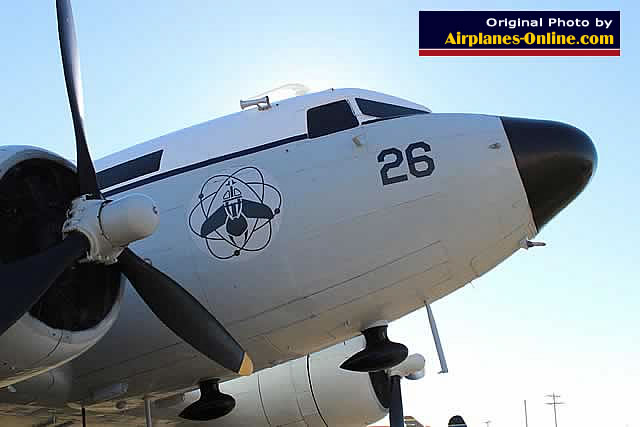 |
Douglas C-47B Skytrain "City of Garibaldi", seen here on display at Tillamook, Oregon ... it was later moved to the Erickson Aircraft Collection in Madras, Oregon |
 |
C-47 Skytrain "The Snafu Special", S/N 43-15073, Merville, France (Photo by DELEHELLE Eric) |
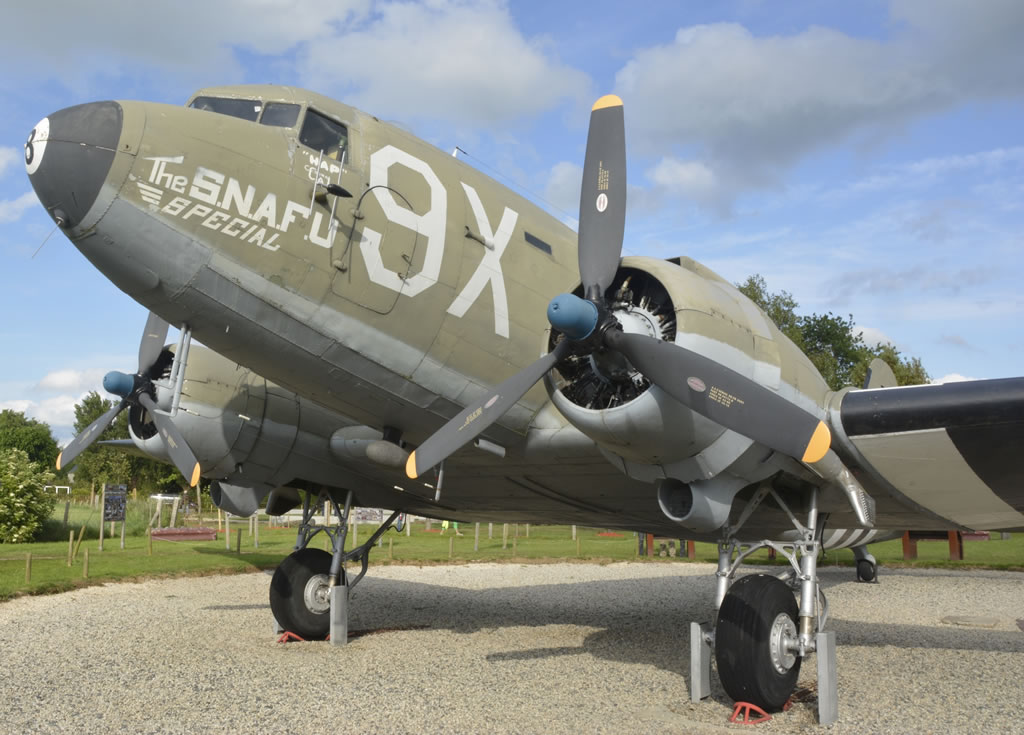 |
Nose view of C-47 Skytrain "That's All, Brother", S/N 42-92847, Registration N47TB, Cherbourg, France, June of 2014. (Photo by DELEHELLE Eric) |
 |
C-47A Skytrain, Registration F-AZTE, painted in Air France colors, at Cherbourg, France, June 4, 2014 (Photo by DELEHELLE Eric) |
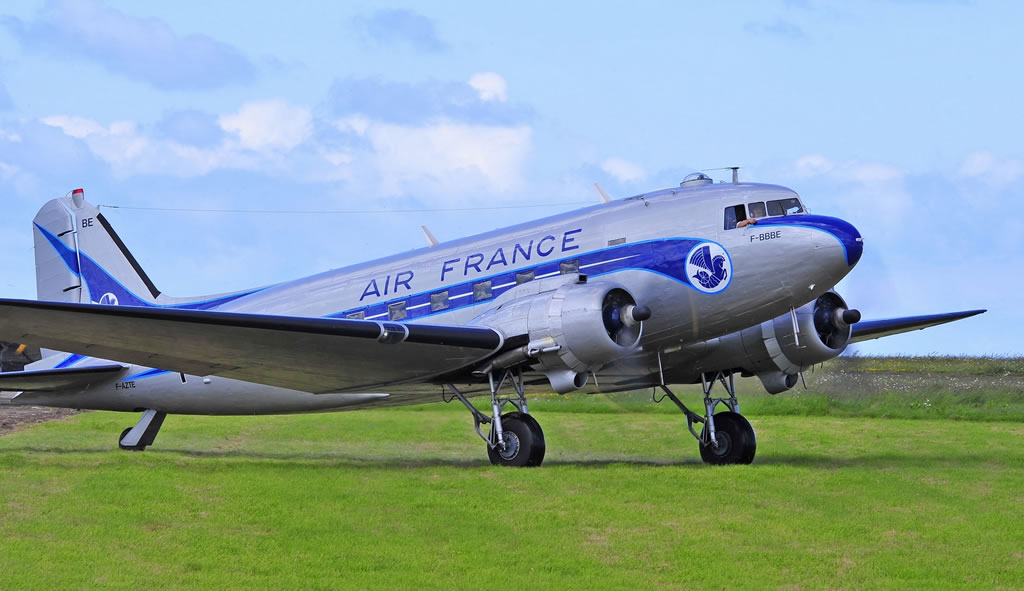 |
C-47A Skytrain, Miss Montana, Registration N24320, S/N 42-24320. Built in 1944, it was later converted to a DC-3 and used for years hauling cargo and dropping smoke jumpers. Today it is owned by the Museum of Mountain flying in Missoula, Montana. It remains airworthy, and painted in Johnson Flying Service, Inc. livery. (Photo by DELEHELLE Eric) |
 |
Close-up view of cockpit and nose art on the C-47A Skytrain, Miss Montana, Registration N24320, S/N 42-24320. (Photo by DELEHELLE Eric) |
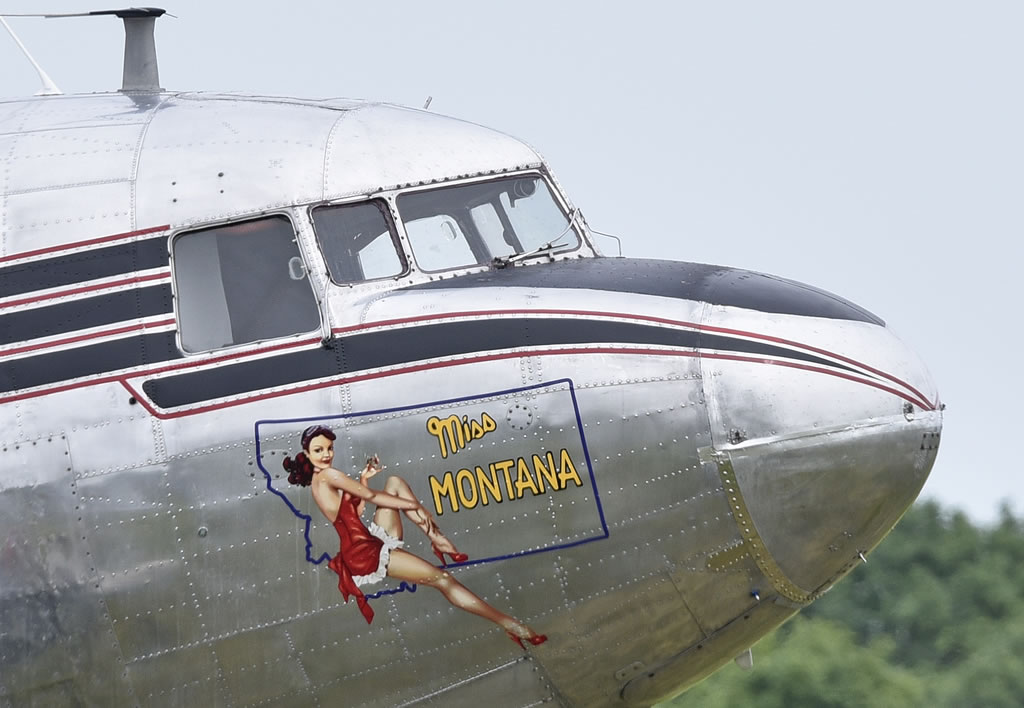 |
Douglas C-53D-DO Sky Trooper, S/N 11750, Registration LN-WND, at Cherbourg, France, June 2014. The aircraft was built Douglas Aircraft Corporation at is Santa Monica, CA plant in 1942. The C-53D-DO does not have the cargo door and reinforced floors in the loading area as does the C-47. (Photo by DELEHELLE Eric) |
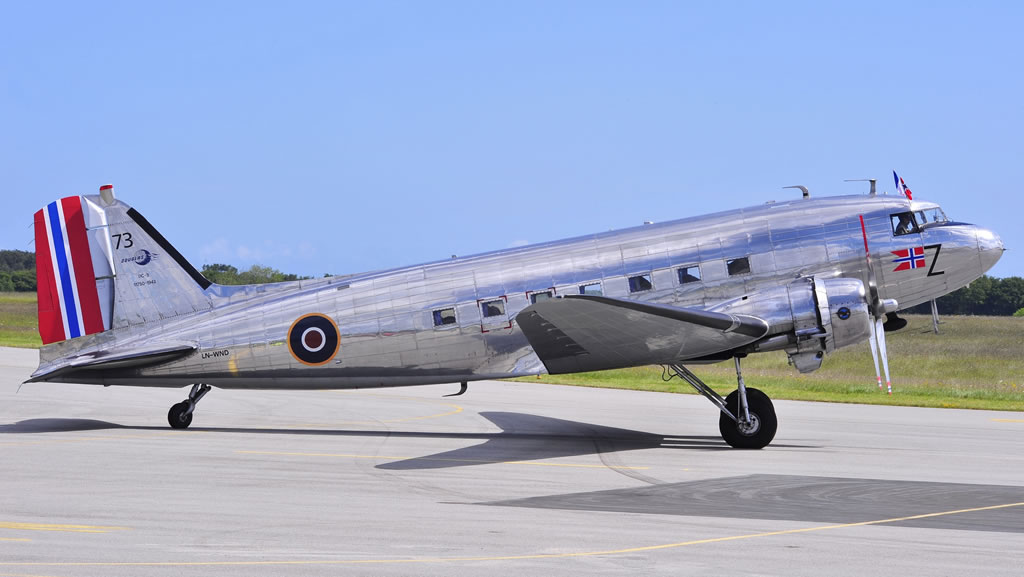 |
Douglas C-53D-DO Sky Trooper, S/N 11750, Registration LN-WND (Photo by DELEHELLE Eric) |
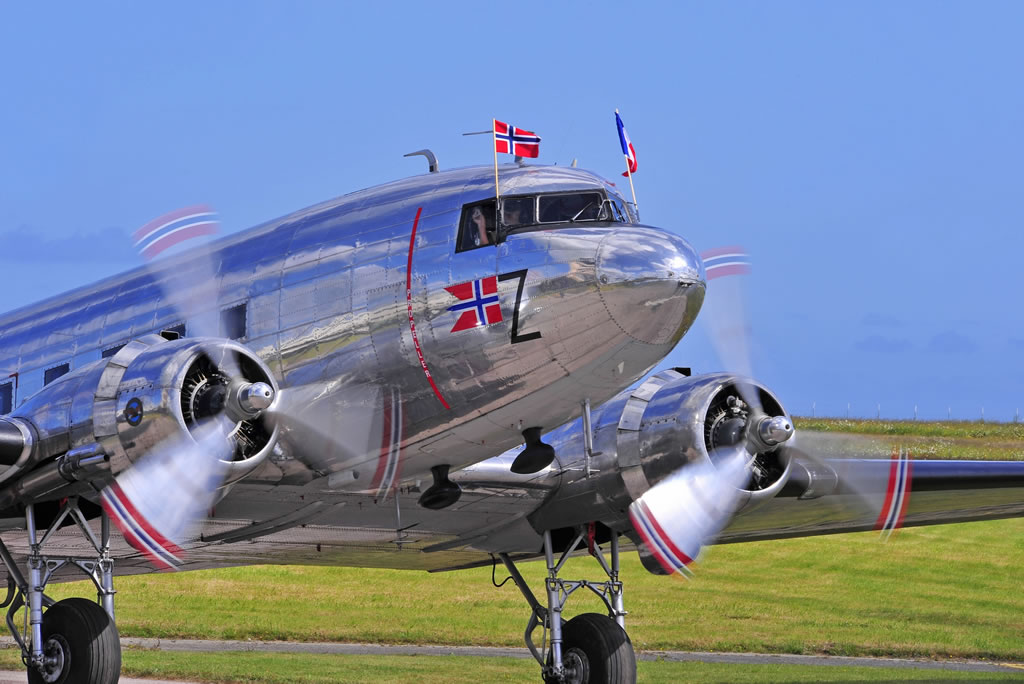 |
This C-47A-DL was delivered in April 1944 to the USAAF, today marked as "DC-3 Vennerne", Registration OY-BPB, Cherbourg, France June 2014 (Photo by DELEHELLE Eric) |
 |
Nose view of the C-47A-DL delivered in 1944, today marked as "DC-3 Vennerne", Registration OY-BPB, Cherbourg, June 2014 (Photo by DELEHELLE Eric) |
 |
C-47 "Prinses Amalia", Registration PH-PBA, in the markings of KLM Royal Dutch Airlines, seen here at Cherbourg, France, in June of 2014 (Photo by DELEHELLE Eric) |
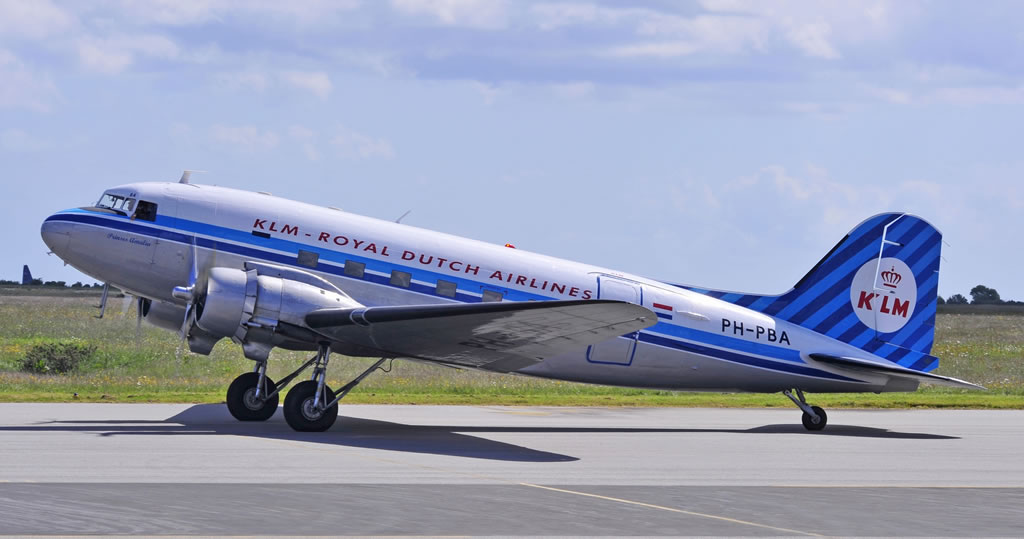 |
C-47 "Prinses Amalia", Registration PH-PBA, in the markings of KLM Royal Dutch Airlines, Cherbourg, June of 2014 (Photo by DELEHELLE Eric) |
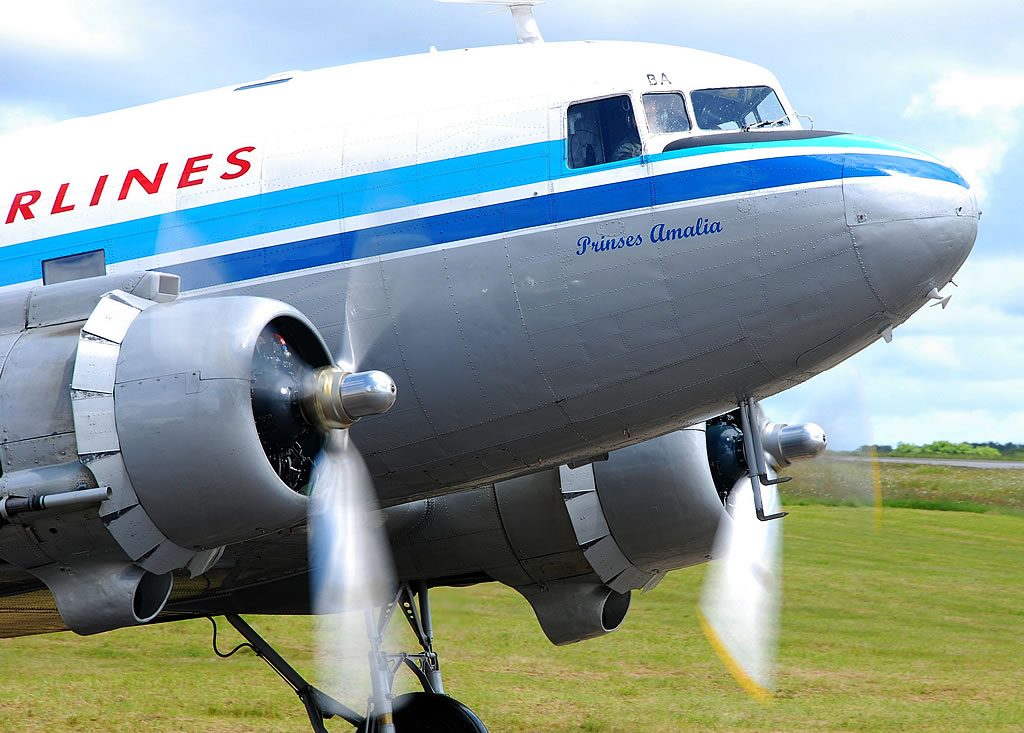 |
Lisunov Li-2T, “Karman Todor”, a license-built Soviet version of the Douglas DC-3, Registration HA-LIX, at Cherbourg, June 4, 2014 (Photo by DELEHELLE Eric) |
 |
|
More Information about the DC-3 and C-47
The DC-3/Dakota Historical Society
The DC-3 Commercial Transport at Boeing
DC-3 at the Delta Airlines Museum
American Airlines Flagship Detroit Foundation



